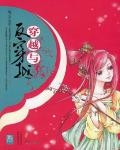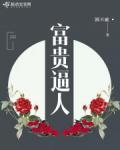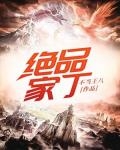Volume 2: Soaring! The Overlord of the Region Chapter 303 Dad, Someone Hit Me
The old sailor's observation was correct at a distance of three thousand meters. Siam certainly did not have so many warships. The reason for this was, of course, that the Siamese fleet joined the Spanish Manila fleet on its way north.
Therefore, after seeing this battle, the captain of Suzhou turned around and left without hesitation: Yes, the Ming Dynasty Chongmingsha Navy has had the slogan of fighting the enemy since the day it was established. But the Ming Dynasty Navy will not do things like hitting a rock with an egg.
Just as the Siamese Navy and the Spanish Fleet were rushing towards Hainan Island of the Ming Dynasty, thousands of miles northeast of here, many pirates, merchants and fishermen on Tsushima Island were horrified to see a huge fleet with countless flags of strange patterns roaring across the sea!
This was a huge fleet with a total of more than 800 warships. Except for ten 1,200-ton and thirty 700-ton new sailing warships, the rest were various large Ataka ships, Seki ships and even Kobaya ships.
Of course, except for the eighty new warships led by Yagyu Kanbei which were responsible for escort missions, the other ships were basically troop and grain transport ships.
"Mr. Chunagon, we have passed Tsushima Island."
"Yoshi, the wind direction is really good today. It will take us half a day to drive here from Nagoya, right?"
"Yes, we set out last night. It's noon now and we have already covered most of the distance."
"Very good. Pass the order down. Except for the Yagyu fleet which will continue to undertake the escort mission, the other fleets will be divided into three groups: left, center, and right. Kohaya and Seki ships will be in the front. All will be deployed."
"Hi Yi!"
The Chu-nagon here is, of course, Date Masamune. Although he himself did not want to leave Japan, he was ready to let Date Narimune lead the Date family's samurai on his behalf. But how could Tokugawa Yoshinao, a time traveler, let him go? After a round of soft and hard tactics, Date Masamune was forced to serve as the general commander of the first army in this expedition to Korea.
Speaking of which, this was also the first time that Date Masamune commanded such a large number of troops.
This time, Japan sent troops to invade Korea. The total strength of the army was: 6,300 samurai under the command of local daimyo and 60,000 old-style foot soldiers. They were from the outer daimyo such as Date, Maeda, Uesugi, Mori, Shimazu, and the hereditary daimyo such as Matsudaira, Ii, Honda, and Sakakibara.
As a time traveler, Tokugawa Yoshinao knew that Japan did not pay much attention to logistics even during the Second World War in the 20th century. They often said nonsense such as "logistics is also considered a soldier, and a dragonfly is also considered an eagle". As a result, the Japanese army often had insufficient logistics when fighting abroad. Then, in order to avoid being hacked to death by their own soldiers, the officers would naturally indulge the soldiers to burn, kill and loot the local people - which in turn aroused fierce resistance from the people in the occupied areas.
Therefore, this time, Tokugawa Yoshinao equipped this old-style army with a full 10,000 civilians - this was just the initial stage. Later, more civilians were mobilized in the country, ready to drive various ships to provide logistical support for the front-line army.
This was true for the old-style army, not to mention the new-style army in this large fleet.
The First Division of the Japanese Shogunate's new army had a full strength of 15,000 people. In addition to the grooms and military doctors that the division had itself, there were nearly 5,000 people assigned to this division who were specifically responsible for operating ships to transport food and ammunition to provide logistical support for this army!
In other words, this fleet, totaling nearly 100,000 people!
And the new fleet led by Yagyu Kanbei is not included!
In short, although the entire country did not come, the attack launched by Japan this time was very difficult for North Korea, a small country like North Korea.
In 1392 , Lee Seong-gye, a general of Wang's Goryeo, launched a mutiny, and the newly established regime was given a new name by the Ming Dynasty: Joseon. Thus, the peninsula entered the era of Lee's Joseon.
As a regime that fully learned Chinese Confucian civilization and was more devout than the Central Plains dynasties in China, Joseon naturally became weaker and weaker. The royal family gradually lost effective control of the country, the civil officials completely suppressed the military officials, and then undermined the king, and endless internal fighting began again.
The literati of Joseon were basically hereditary, and this was the so-called "Yangban". Like the literati in China, the yangban aristocracy constantly encroached on the country's land and people, causing financial difficulties for the country - thus, the country's national defense was also weakened.
As time went on, the number of Yangban nobles increased. Joseon was a small country, and it could not last for two or three hundred years like the Central Plains dynasties in China. So when it came to the third generation of the Joseon Dynasty, King Gongjeong of the Joseon Dynasty, Yi Bang-won, he had to distinguish between the sons of Yangban nobles: the legitimate sons were still Yangban nobles and could become officials. The illegitimate sons were classified as "middle class" and could only work as clerks, medical officers, translators, etc.
Even so, the country was still too small, so in order to compete for limited official positions and resources, the two classes of nobles inevitably fell into infighting.
First, the literati split into the Dongren Party and the Seon Party, the Dongren Party split into the Namren Party and the Bukren Party, and the Seon Party split into the Noron Party and the Soron Party - the political struggles in the Joseon Dynasty were much more bloody and cruel than those in the Ming Dynasty of the same period, and physical annihilation was often the result.
There is really no way around it. As long as the hereditary system of the Yangban class still exists, such bloody political struggles will continue in this country with scarce natural resources. Even during the period when Toyotomi Hideyoshi invaded Korea, the internal struggles among the Korean scholars did not stop. Xing Jie, Yang Hao, Li Rusong, and Liu Jing, who were stationed in Korea at the time, all had a very deep .
In the 21st century, Japan has a land area of 377,000 square kilometers and a population of nearly 130 million. North Korea and South Korea combined have a land area of about 220,000 square kilometers and a population of nearly 80 million. In this era, although there are many daimyo in Japan, the population is still very clear: nearly 20 million.
And what about North Korea at this time?
Before Toyotomi Hideyoshi invaded, the population on the national register was over 5 million. After the war, the population on the national register was only over 2.3 million. Although this was the number of people the government knew, this number certainly was not the actual population of Korea. In any case, the population of Korea at this time should have been at least 10 million.
The reason for such a large deviation is, of course, that these people are under the control of the yangban nobles and cannot be reflected in the national register.
Therefore, such a poor country, whose national strength was seriously weakened by the fatal political system, faced Japan, which was blessed by the time traveler. Of course, there was no doubt about the outcome.
On April 6, 1617, the Japanese army landed in Busan, and the Korean defenders fled without a fight. Afterwards, the Japanese army was divided into three routes: Date Masamune and others led the army directly northward, planning to sweep across Gyeongsang Province and then enter Gangwon Province. At the age of only fourteen, Tokugawa Yoshinao's younger brother Tokugawa Yoshinori led a group from Busan to the west and entered Jeolla Province. And Ii Naotaka led the first division of the Japanese new army, from the northwest, directly into Chungcheong Province, and pointed to Gyeonggi Province!
On the 10th, after receiving the news that Japan was invading the country again, King Yi Hui of Korea, who was in Seoul, started to pack his luggage very quickly. Of course, the reason was definitely that the remnants of the Jurchens in the north had invaded the border, and the king wanted to lead the army in person. At the same time, he sent three groups of envoys in succession to ask for help from the Ming Dynasty!
Dad Daming, the bad guy next door is here to beat me up again!






